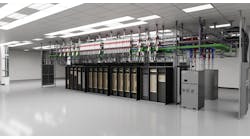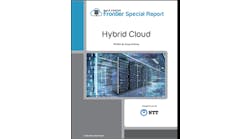As Intel Stumbles, AMD Sees Significant Growth In Its Data Center and AI Business
Advanced Micro Devices (AMD) recently released its fourth-quarter and full-year 2024 financial results, showcasing significant achievements, especially in their EPYC server CPUs and Instinct AI accelerators, but still fell short of market expectations.
In Q4 2024, AMD reported record revenue of $7.7 billion, marking a 24% increase year-over-year. The gross margin improved to 51%, up from 47% in the same quarter the previous year. Operating income reached $871 million, a 155% rise from Q4 2023, while net income stood at $482 million, down from $667 million the prior year.
On a non-GAAP basis, the company achieved a record operating income of $2.0 billion and net income of $1.8 billion, with diluted earnings per share at $1.09.
For the full year 2024, AMD's revenue totaled $25.8 billion, with a gross margin of 49%. Operating income was $1.9 billion, and net income was $1.6 billion. Non-GAAP figures indicated a gross margin of 53%, operating income of $6.1 billion, and net income of $5.4 billion.
According to the summary in the financial report announcement, growth in both EPYC CPUs and Instinct GPU shipments increased 94% year over year, hitting a record $12.9 billion for the entire fiscal year.
Future Pathways in Data Centers and AI
Despite the 69% growth of data center related business, a star in the AMD portfolio, to a record $3.9 billion for the most recent quarter, the company still missed the optimistic analyst projections of $4.1 billion for the data center space in Q4.
AMD Chair and CEO Dr. Lisa Su highlighted the importance of the data center and AI sectors to the company’s future, saying:
2024 was a transformative year for AMD as we delivered record annual revenue and strong earnings growth. Data center segment annual revenue nearly doubled, as EPYC processor adoption accelerated and we delivered more than $5 billion of AMD Instinct accelerator revenue. Looking into 2025, we see clear opportunities for continued growth based on the strength of our product portfolio and growing demand for high-performance and adaptive computing.
Meanwhile, high performance computing (HPC) and supercomputing have been big wins for AMD with El Capitan. The supercomputer at Lawerence Livermore National Laboratory has the recent distinction becoming the second AMD powered supercomputer to pass the exascale performance threshold and hitting #1 on the most recent Top500 supercomputer list.
What’s Going On With Intel?
In December 2024, CEO Pat Gelsinger was ousted amid dissatisfaction with the pace of his turnaround strategy. Interim co-CEOs David Zinsner and Michelle Johnston Holthaus have assumed leadership as the company searches for a permanent successor. This leadership instability has raised concerns about Intel's strategic direction, particularly in its efforts to establish a contract chip manufacturing business.
In the third quarter of 2024, AMD surpssed Intel's data center and AI group's earnings of $3.3 billion in the same period.
In the AI chip market, Intel has struggled to keep pace with Nvidia. The company canceled plans for its Falcon Shores GPU accelerator and has seen weak demand for its Gaudi AI accelerator chip.
At the same time, AMD has seen significant success with its Instinct family of GPUs.
In the server CPU segment, Intel has delayed its efficiency-focused Clearwater Forest server CPU to 2026, while its 18A process is performing well. Further, Intel is preparing a high-core-count server CPU, Granite Rapids, slated for release in 2025, aiming to match AMD's core counts for the first time since 2017.
Market analysts expect continued market share loses to AMD in PC and Server, where Intel formerly dominated, as reflected by the company’s 4% market share loss, and AMD picking up that market share.
While Intel is focusing on managing operating expenses and refocusing their efforts, having shed underperforming units over the last 18 months, Intel faces significant market challenges.
What Does the Future Hold for AMD?
AMD EVP, CFO and Treasurer Jean Hu was quoted as reflecting on the positive future for AMD, saying:
We closed 2024 with a strong fourth quarter, delivering record revenue up 24% year-over-year, and accelerated earnings expansion, while investing aggressively in AI and innovation to position us for long-term growth and value creation.
AMD anticipates first-quarter 2025 revenue between $6.8 billion and $7.4 billion, with the potential to exceed analyst expectations.
Announced strategic initiatives, including the development of next-generation AI accelerators and partnerships with key industry players, should play a significant role in increasing AMDs presence in the data center market, for both CPU and AI GPUs in the data center.
For some counter-perspective, as shown in the video below, Advisors Capital Management partner JoAnne Feeney recently appeared on the 'Bloomberg Technology' show to discusses what she characterized as a "disappointing" AI data center outlook from AMD.






